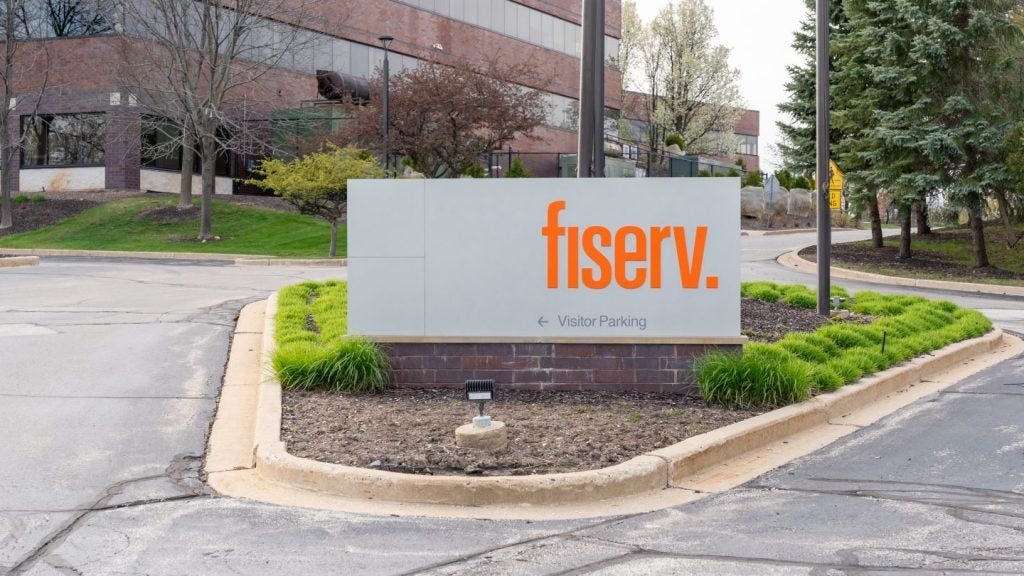With the backing of payments processing giant Metavante, UK
mobile banking technology developer Monitise has made solid
progress in the US among smaller banks. However, Monitise faces
stiff competition in a mobile banking market that is still very
much in a development phase. Charles Davis reports.
UK mobile payments technology developer Monitise is making an
impact across the Atlantic, quickly building up an impressive
stable of US banks using its platform through a joint venture with
payment processor Metavante, called Monitise Americas. In
particular, Monitise Americas has given the fledgling mobile
banking market in the US a solid boost by targeting community
banks.
When it launched in November 2007, community banks Harvard
University Credit Union, North Jersey Community Bank and Sutton
Bank were the first to adopt Monitise’s platform. This year,
another 20 smaller banking institutions have added the mobile
banking service, which allows customers to transfer funds, check
account balances, view transactions and receive text alerts.
Giving Monitise’s mobile banking platform significant
credibility is its integration with Metavante’s debit card payments
unit, NYCE Payments Network (NYCE). With 2,500 financial industry
customers, NYCE links 74 million cardholder accounts with 1.5
million POS locations and 280,000 ATMs.
Single-point gateway
The Monitise-Metavante tie-up allows Monitise to offer a
single-point gateway into existing switching and distribution
methods used by remittance service providers, enabling financial
institutions, remittance providers and mobile networks to provide
services to multiple destinations through a single connection to
the platform. Monitise provides a framework that is compliant with
regulatory requirements including anti-money laundering and
combating of financing of terrorism. Users can choose to accept
payment through a channel of their preference, be it a direct
transfer into their bank account or collecting cash from a physical
location.

US Tariffs are shifting - will you react or anticipate?
Don’t let policy changes catch you off guard. Stay proactive with real-time data and expert analysis.
By GlobalDataMonitise offers advantages for small banks because it uses the
same information delivery system as ATMs and debit payments,
meaning that mobile payments earn the banks interchange revenue.
And because the mobile system uses the debit switch, a connection
that the banks already have, it helps to level the playing field
for smaller banks.
Monitise uses text alerts and a downloadable application to let
mobile devices connect to the institutions over the debit network,
so the system works with a broad range of devices. Monitise’s UK
operation, the MoniLink banking and payments network, has
agreements with seven of the UK’s largest banks and dedicated
secure connections into all of the major UK mobile phone
operators.
Demand will increase
Consultancy Celent estimates that by 2010, 30 percent of US
households that use online banking – about 17 million – will use
some form of mobile banking. According to these numbers, demand for
services such as balance inquiries, funds transfers,
mini-statements and text message alerts will increase
exponentially, as consumers increasingly demand mobile
payments.
“The ease with which financial institutions – regardless of
their size – can integrate our technology through the ATM switch
will further drive growth in the adoption of mobile banking and
payments,” said Lisa Stanton, chief executive officer of Monitise
Americas. “With relatively little technical effort or start-up
costs required to add this technology to their expanding set of
services, as well as the convenience it provides to the consumer,
financial institutions can immediately see a positive return on
their investment.”
The next step with Monitise Americas is an interface with
Metavante’s bill payment platform in the second quarter of 2008.
This will make bill payment available through Monitise’s
technology.
Monitise is, however, far from alone in a market that continues
to attract a growing interest from big name technology players.
Elsewhere in the US, for example, wireless technology vendor
Qualcomm’s recent $210 million acquisition of mobile banking
specialist Firethorn gives it access to the payments business of
banks such as Wachovia, SunTrust Bank, Regions Financial,
BancorpSouth and Synovus.
Meanwhile, two small but highly successful mobile technology
providers, Clairmail and mFoundry, have allied to co-market a
system that integrates the Clairmail mobile text messaging and
mobile web capabilities with mFoundry’s client mobile phone-based
banking application.
Big name interest
Mobile commerce also continues to draw interest from some big
names. In recent months, Google dipped deeper into mobile payments
by extending its Google Checkout service to mobile devices whose
wireless application protocol (WAP) browsers can access mobile
internet sites designed for the small screens of mobile
devices.
Google Checkout users register for the payment service using
mobile phones or other mobile devices. Any merchant in the US or UK
that offers Google Checkout for internet purchases, and supports a
WAP-accessible website, can accept payments from mobile devices and
deliver such content as ringtones and music directly to them.
PayPal began enabling mobile payments in April 2006.
Account-holders can use mobile browsers to check their balances,
find places to shop and send funds using text messages by
registering a phone number with PayPal.
Companies such as Google and PayPal can afford to offer mobile
options whether the services lose or earn money in the short term.
But companies only enabling mobile transactions may struggle to
survive until they gain enough users, Holland said.
The growth curve is a long one: today, only 3 percent of US
households that bank online also bank using mobile phones,
according to a recent Celent report. That report suggests that by
2010, some 30 percent of US households that use online banking will
also conduct some banking functions using their mobile phones,
accounting for roughly 17 million households.
As more large banks pursue mobile banking and payments, big
processors and networks that provide financial institutions with
traditional payment services will enter mobile payments by
developing their own services, by partnering or by buying smaller
companies. But payment vendors also are betting on a growing
short-term market for mobile payments based on text, downloadable
applications and mobile web communications.






